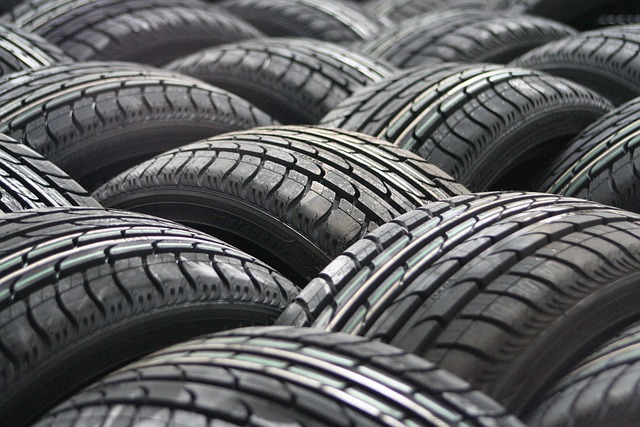“Looking to register your car in California? Our comprehensive guide breaks down the process step-by-step, ensuring a smooth experience. From understanding the state’s requirements to gathering essential documents, we cover it all. Learn about the crucial role of the DMV VIN verifier and what to expect during your visit. Discover post-registration tasks and important considerations, making car registration in California effortless.”
- Understanding the California Car Registration Process
- Gathering Required Documents for DMV Visit
- The Role of the DMV Vin Verifier in Vehicle Registration
- Step-by-Step Guide to Registering Your Car in California
- Post-Registration Tasks and Important Considerations
Understanding the California Car Registration Process

Understanding the California Car Registration Process
In California, registering a car involves several steps that can seem daunting at first, but with the right preparation and knowledge, it becomes a straightforward process. The primary agency responsible for vehicle registration is the Department of Motor Vehicles (DMV). They handle all paperwork related to car registration, including issuing titles and license plates. One crucial step in the process is the verification of the Vehicle Identification Number (VIN). This unique 17-character code helps ensure that your vehicle matches its documentation accurately.
Using a DMV VIN verifier or opting for a mobile vin verification service can make this part of the registration process much easier. These services allow you to check your car’s history, identify any potential issues, and ensure that it meets all legal requirements before submitting your registration application. Whether you choose to do a vin inspection at a DMV office or opt for a mobile vin inspection, having accurate and up-to-date information about your vehicle is key to a smooth registration experience in California.
Gathering Required Documents for DMV Visit

Before visiting the DMV, ensure you gather all essential documents to streamline the car registration process. One crucial piece is the Vehicle Identification Number (VIN) verifier, which can be obtained through a mobile vin inspection or by checking your vehicle’s documentation. This unique 17-character code is vital for identifying your car and verifying its history.
Additionally, you’ll need proof of ownership, typically a title document; valid identification like a driver’s license; registration papers from the previous year; and if applicable, a release of liability or bill of sale. It’s advisable to double-check the DMV’s website for an up-to-date list of requirements, as some documents may vary based on your specific circumstances.
The Role of the DMV Vin Verifier in Vehicle Registration

The DMV Vin Verifier plays a pivotal role in the vehicle registration process in California. This official service ensures that all vehicles on the state’s roads meet specific safety and legal standards before they can be registered. By cross-referencing the Vehicle Identification Number (VIN) against their database, the DMV verifier confirms the authenticity of the vehicle’s make, model, year, and other critical details. This step is crucial in preventing the registration of stolen vehicles or those with altered IDs.
Additionally, California offers an alternative method through mobile vin inspection or verification services. These services provide a convenient way for individuals to get their vehicles checked without visiting a DMV office. Mobile vin verifiers can perform this task on-site, saving time and effort for vehicle owners. This flexibility ensures that the registration process remains accessible and efficient, aligning with the state’s goal of streamlining automotive transactions.
Step-by-Step Guide to Registering Your Car in California

Registering a car in California involves several straightforward steps, ensuring your vehicle is road-ready and legally compliant. Here’s a step-by-step guide to help you through the process. Begin by gathering all necessary documents, including your vehicle’s registration certificate from the previous state, proof of insurance, and a valid driver’s license. Next, visit the California Department of Motor Vehicles (DMV) website or a local DMV office to initiate the registration process. You’ll need to complete an Application for Title and Registration form, providing details about your vehicle, including its make, model, year, and Vehicle Identification Number (VIN).
After submitting your application, you’ll typically be required to undergo a VIN inspection to verify the vehicle’s condition and history. This can often be done at authorized service centers or through mobile vin verification services, allowing for added convenience. Once your VIN inspection is complete and passed, along with all other required documents, the DMV will process your registration application, issuing you a California vehicle title and registration plates. Ensure everything is in order before hitting the road!
Post-Registration Tasks and Important Considerations

After successfully registering your vehicle in California, there are several crucial post-registration tasks to complete. One essential step is obtaining a Vehicle Identification Number (VIN) verifier from the DMV. This process ensures that the VIN on your car matches the one listed in the registration records, enhancing security and preventing fraud. You can do this through an online or in-person request at a local DMV office.
Additionally, consider utilizing mobile VIN verification services for added convenience. These services allow you to check your vehicle’s history from the comfort of your home or on the go using just your smartphone. A mobile VIN inspection not only verifies the vehicle’s authenticity but also provides valuable information about its past, including ownership changes and accident histories. This extra layer of scrutiny can be beneficial when purchasing a used car, ensuring you make an informed decision.
Registering a car in California involves several crucial steps, from gathering essential documents to interacting with the DMV Vin Verifier. By understanding the process and ensuring all requirements are met, you can efficiently complete vehicle registration. Remember that proper documentation and adherence to guidelines are key to a smooth experience. After registration, staying informed about post-registration tasks and important considerations will help maintain your vehicle’s compliance and legal status in California.



